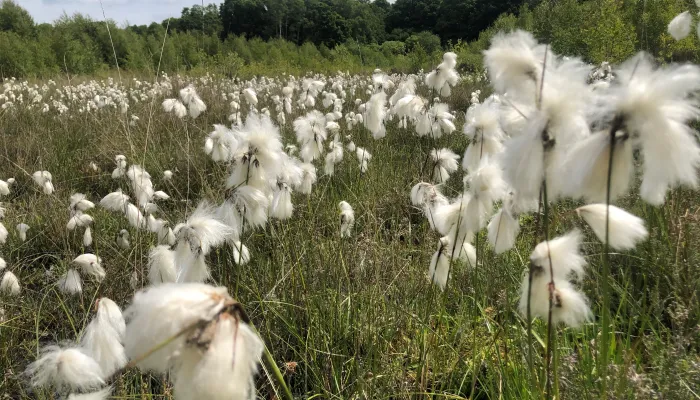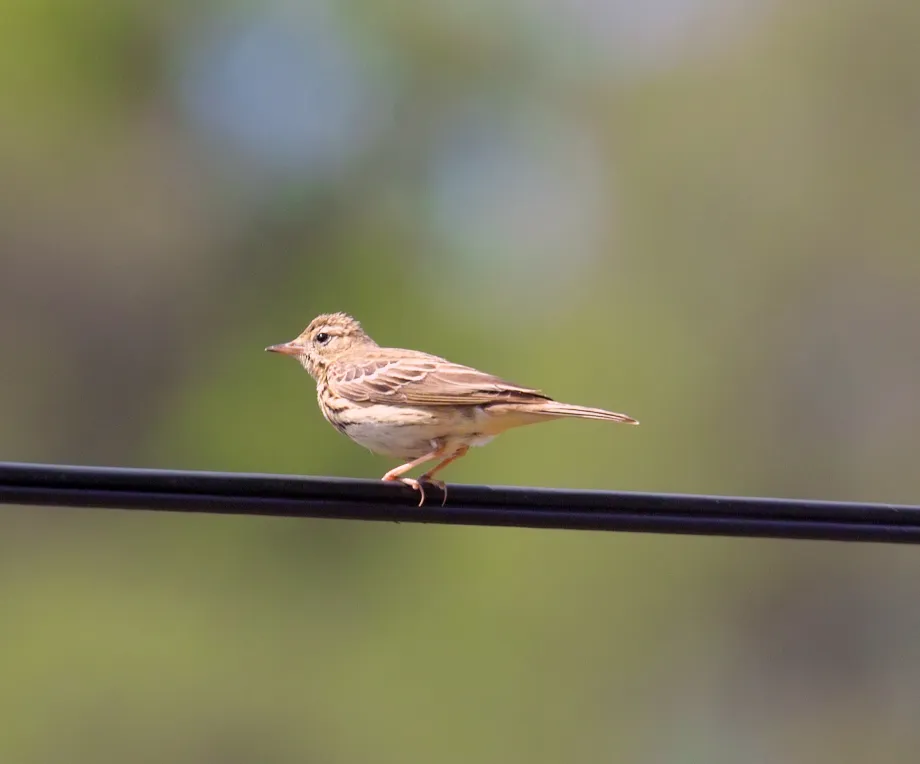
Derek Moore
Engineering around water has been a key task this dry spring and early summer; adding faggots of brushwood from on-site clearance work to leaky dams, fencing ponds that need protecting, blocking off a small water course in Bog 4 so the water could flow through a new channel to rewet the inner part of the bog and other hydrological diversions. Other work by the volunteers, aided one day by a corporate team, was scything bracken, brush cutting, tree-popping, more fencing, and path maintenance.
After last year’s insect drought, volunteer David Rayner was delighted to see the flowers of ragwort, Jacobaea vulgaris, with more visitors this July. He says ‘ragwort plants are the main larval food plant of the beautiful cinnabar moth. The flowers, produce unusually large amounts of nectar and pollen which means that they also attract and provide food for a very wide range of pollinating insects. In a single session David identified the following at the golden banqueting table: Nowickia ferox (a tachinid fly), small copper butterfly, red soldier beetle, jewel wasp or ruby-tailed wasp (there are several similar species), Eriothrix rufomaculata - a bristly parasitic fly whose larvae develop and feed inside moth larvae, 7-spot ladybird, Lygus pratensis (plant bug), thick-thighed beetle (male) and green-eyed flower bee Anthophora bimaculate which is a heathland specialist.
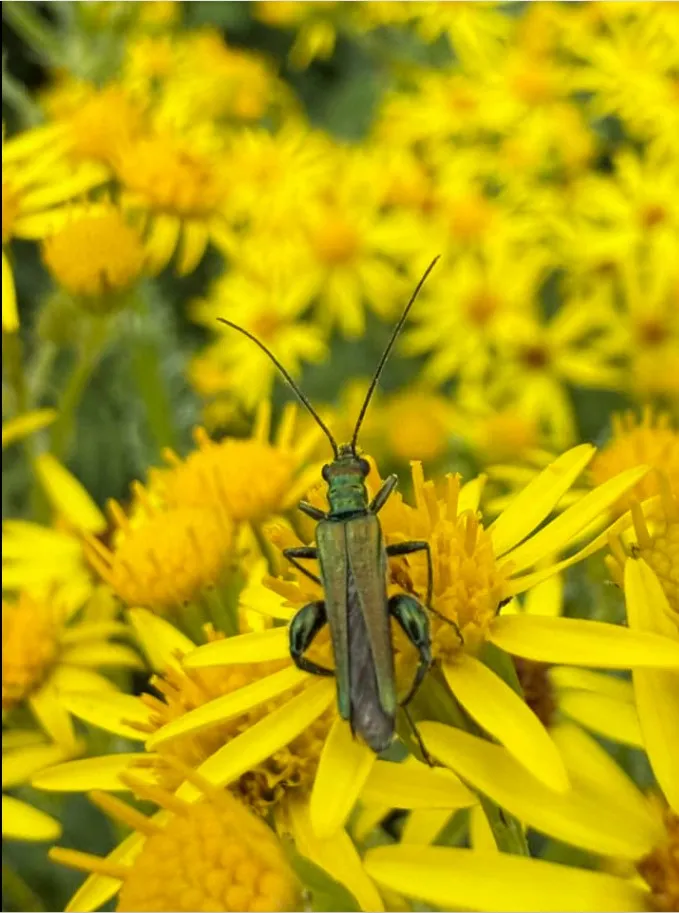
David Rayner
The spectacle of the cottongrass, Eriophorum angustifolium, dancing in the wind in the top bog, the most acid of the bogs, has been commented on a lot this summer. The gleaming white blobs are fairly tough filaments surrounding the small seedheads that develop from the discrete green and brown flowers typical of the sedge family that this plant is a member of. ‘Sedges have edges’ so stems are three-sided (although in the case of cotton grass, only at the top). It is wind-pollinated. One of four native species, it is native in a circle (transboreal) around northern Europe, Asia and America, surviving the harshest (usually cold and wet!) conditions, its tough rhizomes spreading vigorously where other plants won’t grow. So it’s a good indicator of where not to walk as it likes open, wet, peaty bog. The seedheads have been used to stuff pillows and were collected by children in Scotland for wound dressing in the First World War, but the fibres are too short to be spun into thread. It is a food plant for North American West Coast Nations. The scientific name is from the Latin for wool-bearing and narrow-leaved. Cottongrass (a sedge not a grass) is the county plant of Manchester but is very uncommon in Kent and the South-east. It is part of the very specialised flora that makes Hothfield Reserve such a significant place.
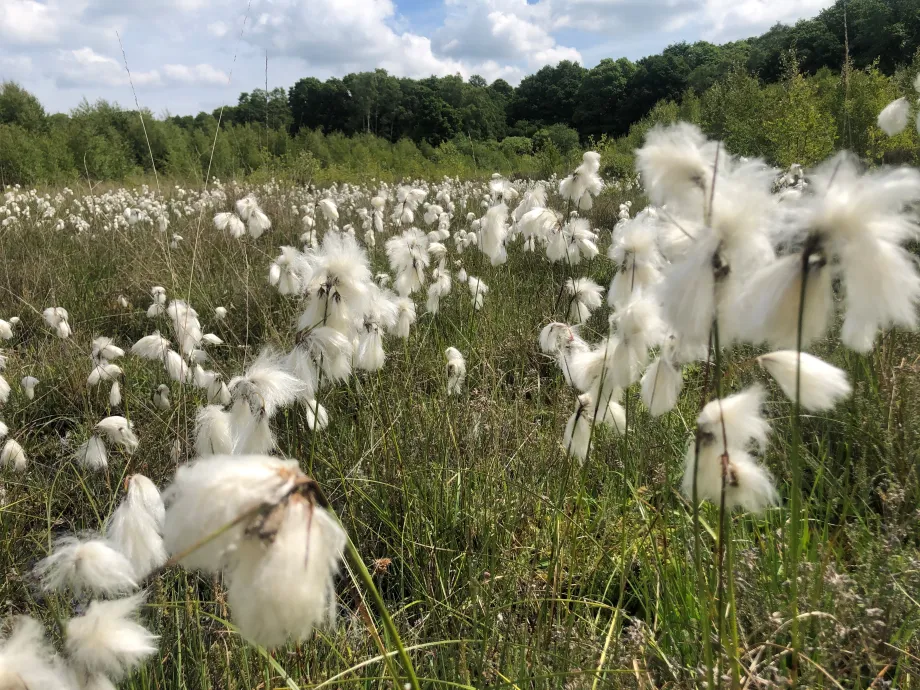
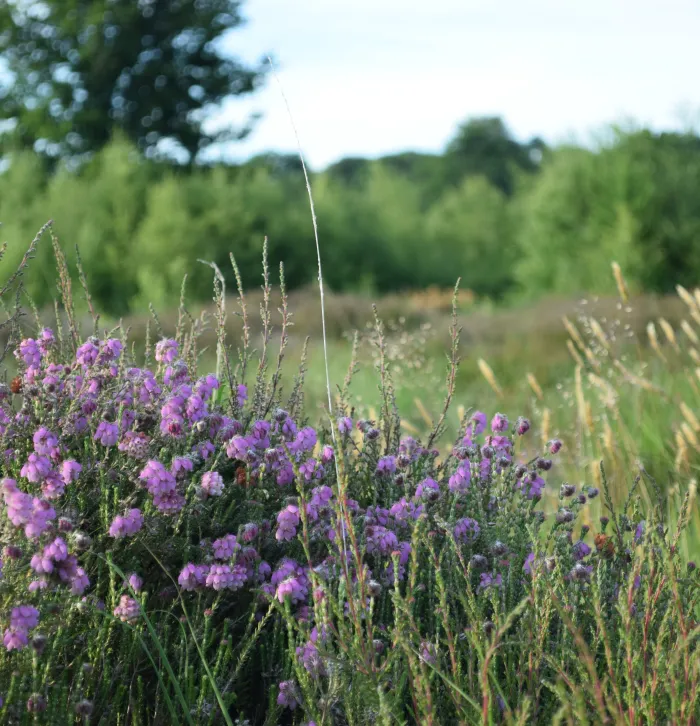
Find out more about Hothfields...
Rich in flora and fauna, this important reserve contains Kent's last four valley bogs and one of its few remaining fragments of open heath.

